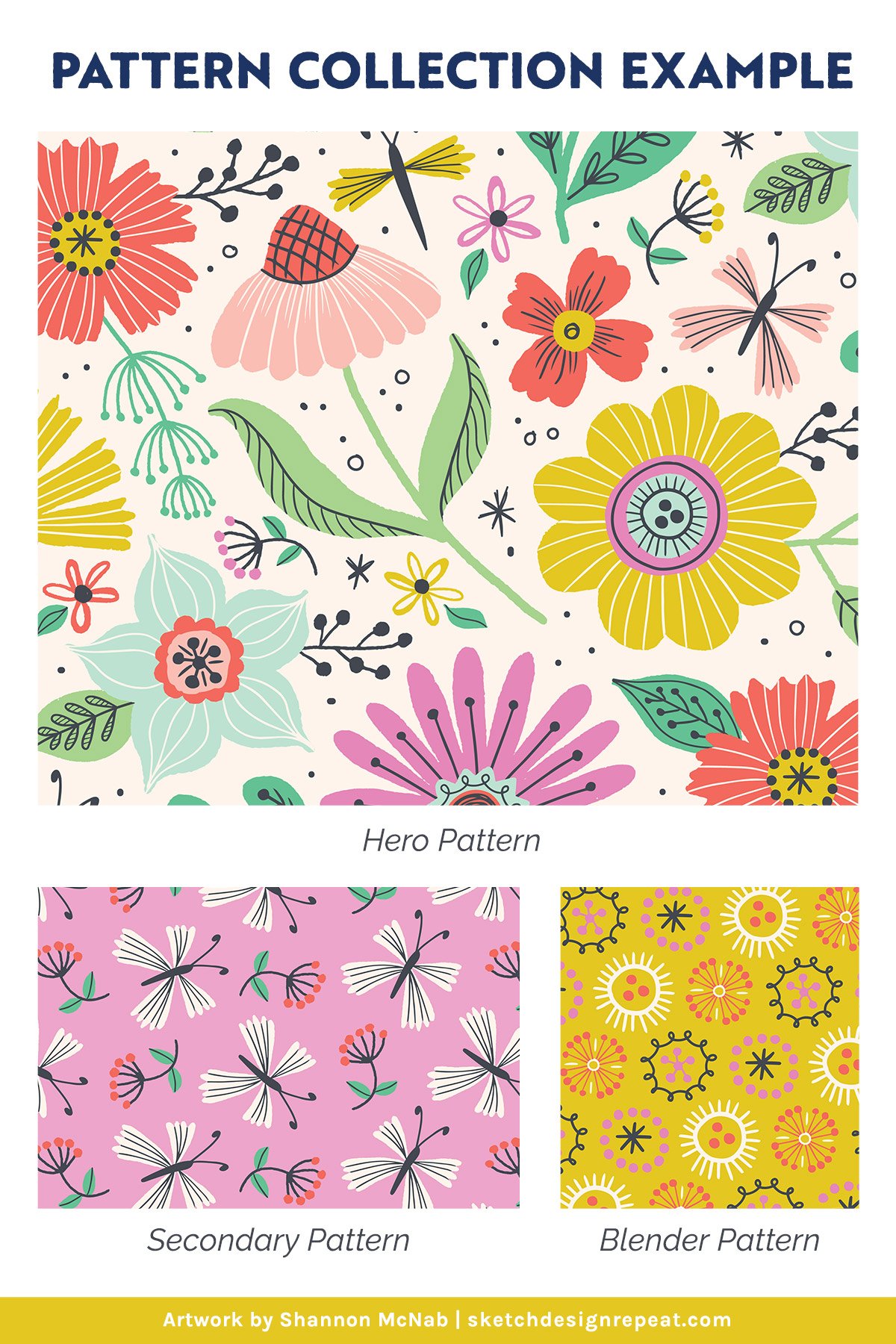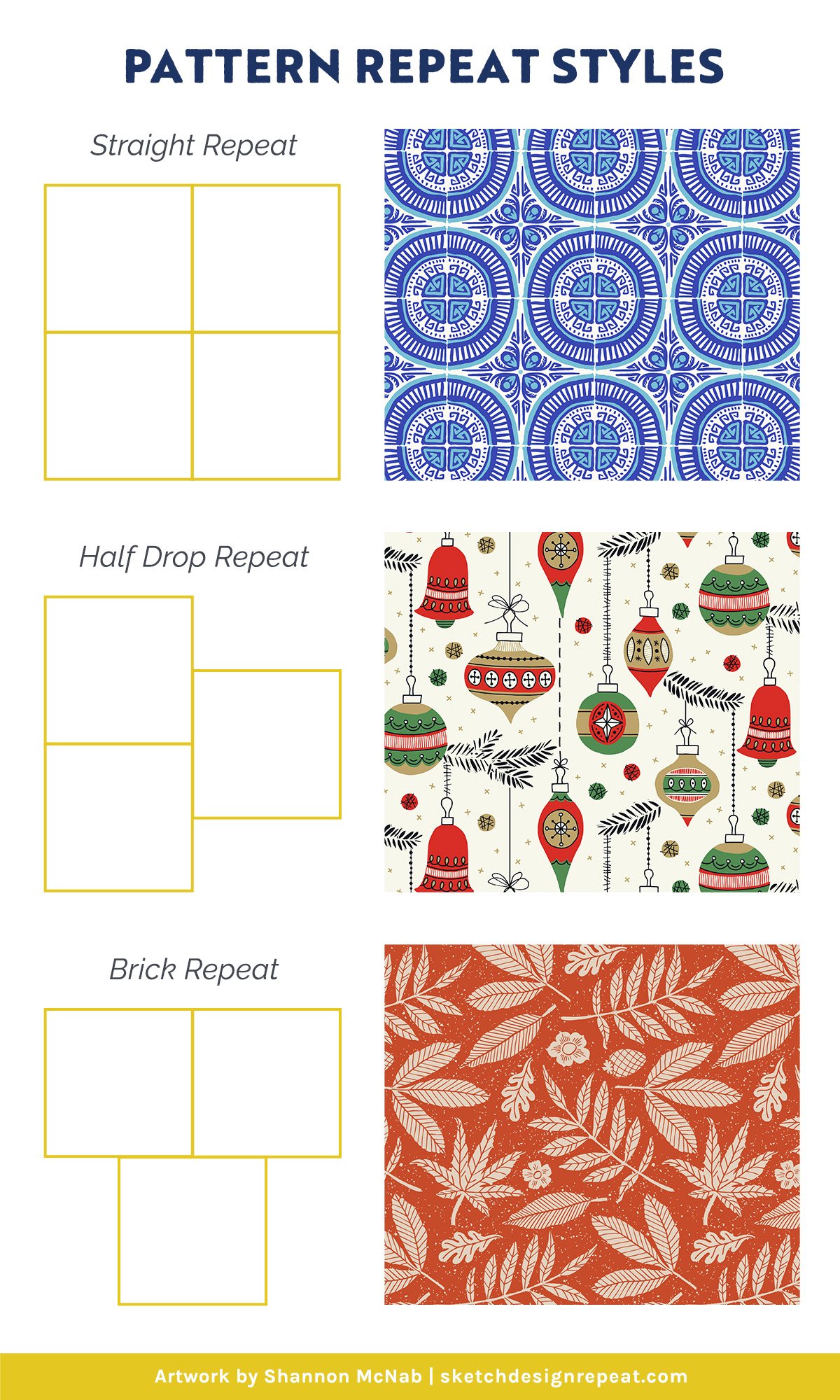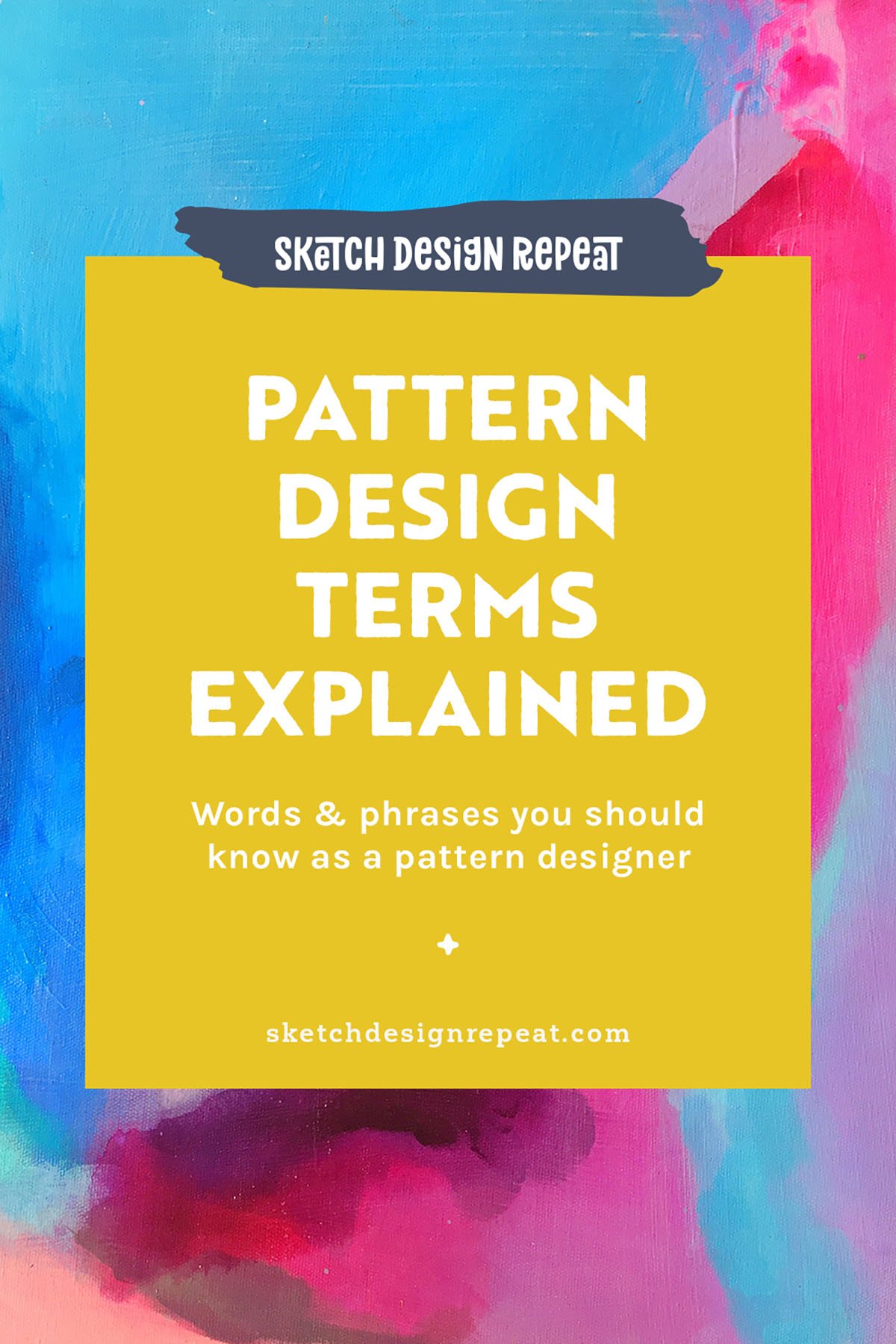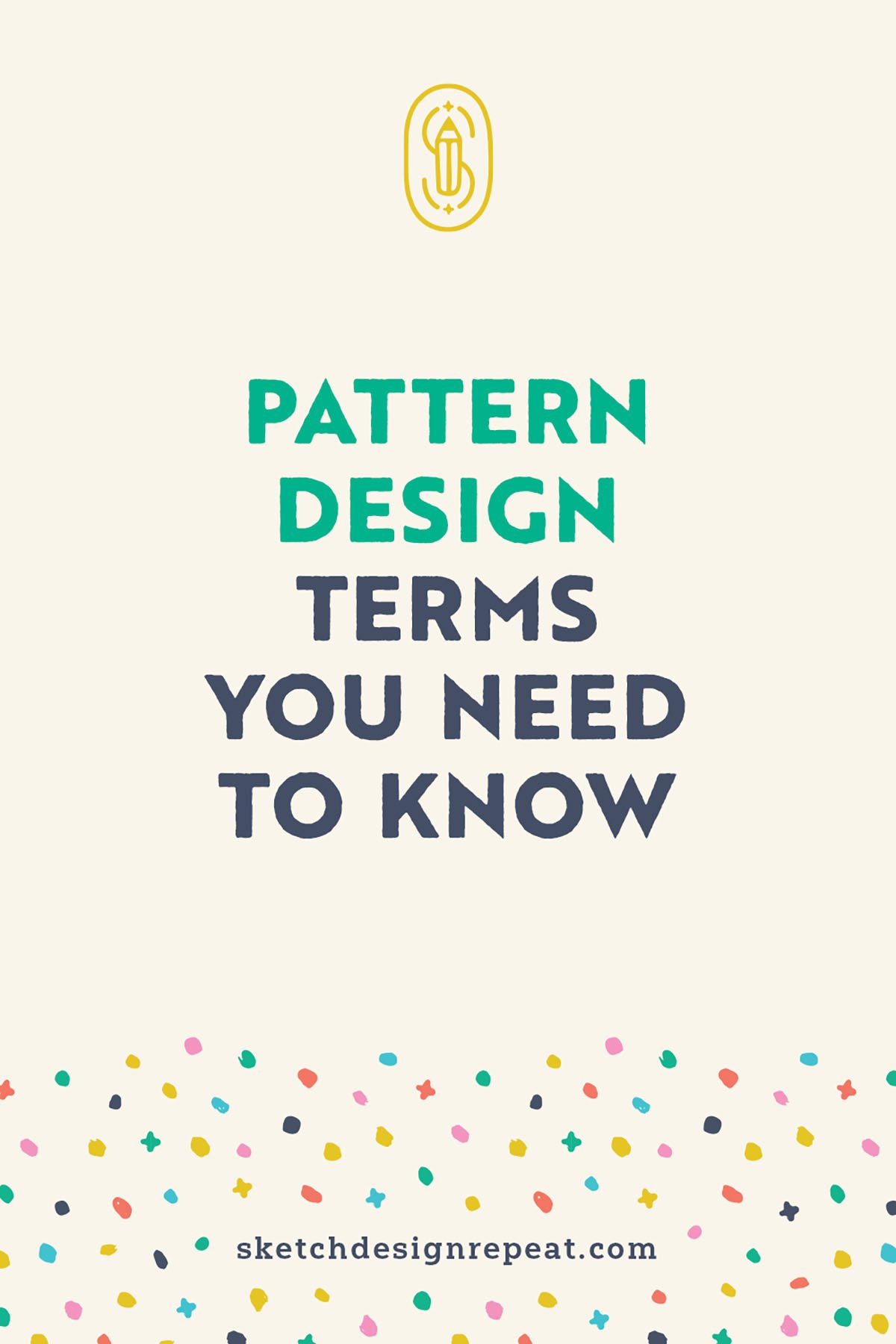If you’re new to surface pattern design and are thinking about developing a career in the industry, it’s important to learn common pattern terms. Doing so will not only make it easier to understand conversations with other artists when you join in on design classes or fun challenges, but it also allows you to talk confidently with potential clients when they’re interested in your art licensing portfolio.
So let’s talk about 10 of the most common pattern design terms you need to know…
Pattern Collection
This simply means a group of artwork that consists of more than one pattern. However, what’s considered a “collection” varies widely in the industry.
For example, in the bolt fabric market, a collection usually consists of 5-12 individual patterns in one or more colorways. But that doesn’t mean collections always need to be large. In fact, a pair of patterns or illustrations could also be considered a collection as long as they share similar characteristics in style, theme, and color.
Hero Pattern
Any complex or detailed pattern that can stand alone. However, hero patterns are often paired up with simpler designs to form a collection. In that case, the hero will usually be the foundation of the collection (ie. your starting point) and all additional designs will be based around it.
Coordinate Pattern
This type of pattern is complementary to a hero pattern, but is usually less detailed and a different scale/size than the hero. And there are several benefits to adding coordinates to your hero patterns.

Secondary Pattern
A secondary pattern is often just called a coordinate. This pattern type is less complex than a hero pattern, but more complex than a blender pattern (see next term). They often use some but not all of the same elements from the hero. However, if motifs from the hero are used in the secondary pattern, it’s important to use them in a different way.
Blender Pattern
A pattern used to complement hero and secondary patterns in a collection. They are usually very simple, small scale designs, using only a few motifs or colors. This type of pattern is particularly helpful when creating larger pattern collections as they help the eye rest between the more complex hero and secondary patterns.
Want to learn how to make great coordinate patterns?
My 15-minute Skillshare class, Creating Strong Coordinate Patterns, can help!
Use the link above and unlock 2 weeks of free membership.

Straight Pattern Repeat
The simplest of all pattern repeat styles, a straight repeat pattern has a layout where the repeat appears on the same horizontal and vertical plane to the original pattern unit. It’s also called a block repeat or a full drop repeat.
If you’re just starting out in design, this will be the easiest type of pattern to master (and where I suggest you start).
Half Drop Pattern Repeat
A pattern layout where the original pattern unit repeats on the same vertical plane, but then when the pattern repeats horizontally, it appears halfway down – it’s called “Brick by Column” in Adobe Illustrator’s pattern maker tool.
Half drops make it much easier to conceal the repeat pattern, making it look more organic and less obvious to the eye. They are definitely an “intermediate” type of repeating pattern, so give it a try once you’ve mastered the straight repeat.
Brick Pattern Repeat
It works a lot like the half drop repeat, except the original pattern unit repeats horizontally on the same plane and then when it repeats vertically, it appears halfway over – it’s called a “Brick by Row” in Adobe Illustrator’s pattern maker tool.
Implied Repeat
A pattern that looks like it could repeat, but doesn’t. You simply place your pattern motifs on your artboard or canvas until it looks good to the eye – implied repeats are often utilized by designers who want to save time.
Many companies have in-house design teams that can take an implied repeat and turn it into a seamless repeat, so if you’re looking to save yourself some time, it’s totally ok to create implied repeats instead. However, I would say don’t do it 100% of the time because knowing how to create seamless patterns is a very important skill in surface pattern design.
Spot Illustration
Unlike a complete and very detailed illustration, a spot illustration is a small and simple motif. It will often accompany a hero pattern or be part of a larger collection and can be an easy way to add a little extra value to a small collection.
So there you have it – the 10 most common surface pattern design terms! And now the next time you hear one of these phrases from a fellow artist or potential client, you’ll totally understand what they’re talking about.
If you want to learn more about surface design and art licensing, you can sign up for our email list – we send out regular emails sharing resources and advice to over 5,000 artists!
Want to save this post to find it later? PIN IT!


Thank you this is well explained and easy to understand
This is a great breakdown. Thank you so much!
Thankyou, I’m new to this artistic, wonderful, creative world. Have been looking for an avenue for my artwork. Love it. Cheers Bernie 🌿
Curious about implied repeat, could you show an example please?